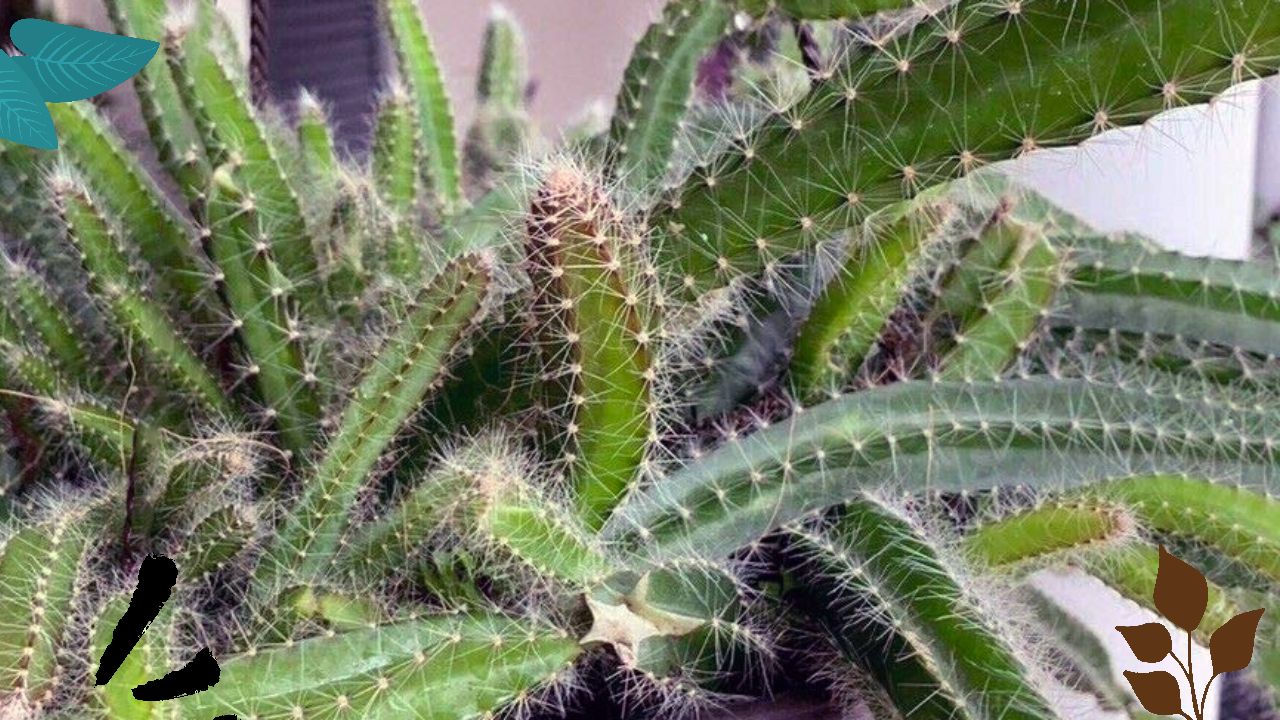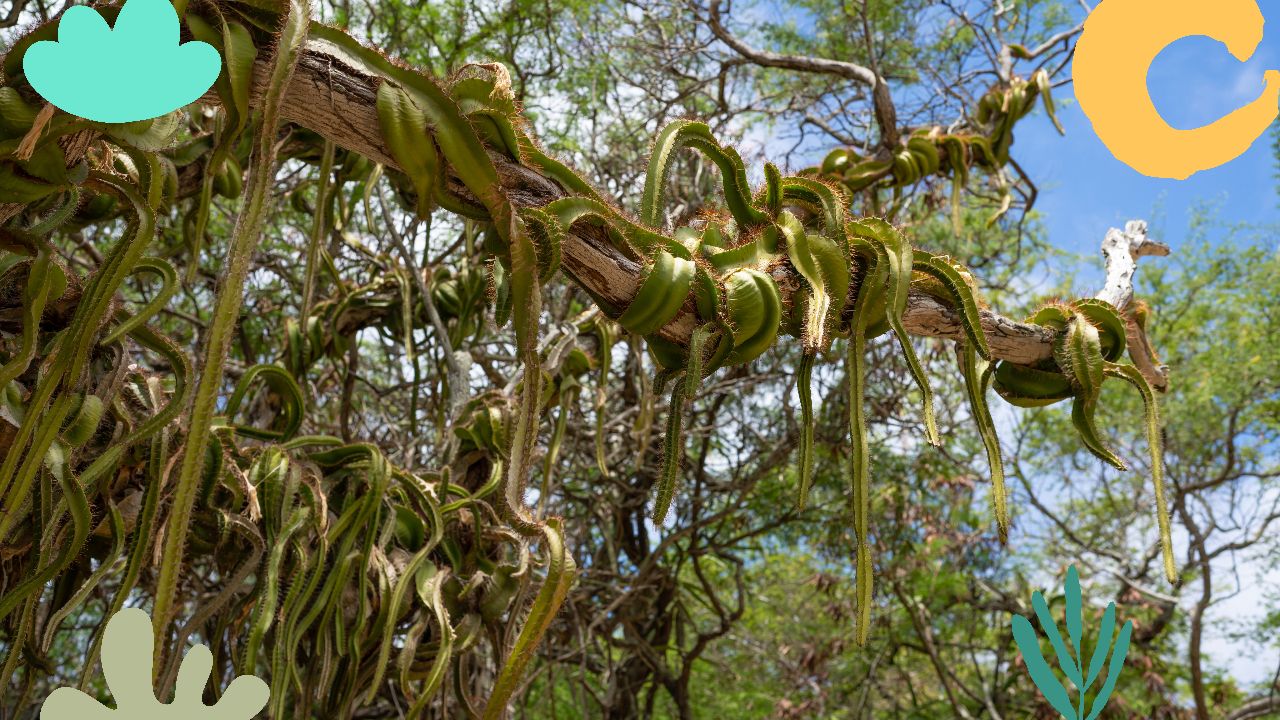
The Dog Tail Cactus, known scientifically as Selenicereus testudo, is a fascinating and unique member of the cactus family like the rat tail cactus. This beautiful cactus species is best recognized for its trailing stems, resembling a dog's tail, and often found gracefully hanging in baskets. It's not just the resemblance to dog tails that captures attention; the Dog Tail Cactus grows with a charm that entices plant enthusiasts of all levels.
Native to the tropical rainforests of South America, this epiphytic cactus thrives in environments that are different from other cacti. Its fine, hair-like spines, pale stems, and pink flowers reflect the natural habitat from which it originates. With the right care, including proper drainage and enough light, the Dog Tail Cactus can become a low maintenance and stunning addition to any indoor garden.
The journey to growing Dog Tail Cactus at home begins with understanding its origins and unique appeal. Whether you're a seasoned gardener or just starting with cacti, this guide will unveil the secrets to growing this South American rainforest beauty.
Join our newsletter
Stay on top of the latest in landscaping and lawn care with one valuable tip right in your inbox every Saturday morning.
Growing Dog Tail Cactus: From Seed to Plant
Growing a Dog Tail Cactus is an exciting journey that begins with propagation. You can either propagate Dog Tail Cactus from seeds or choose the quicker route by using stem cuttings. Both methods have their own merits when propagating dog tail cactus, but stem cuttings tend to root faster and produce a healthy stem.
Propagate Dog Tail Cactus
- Seeds: Start with fresh Dog Tail Cactus seeds and plant them in a well-draining soil mix. Be patient, as seeds may take some time to germinate.
- Stem Cuttings: Take a cutting from the mother dog tail cactus, let it dry for at least a week, and plant it in cactus mix. The cutting will soon begin to develop root growth.
Growing Dog Tail Cactus in Various Environments
The Dog Tail Cactus grows in both hanging baskets and terracotta pots. It's adaptable to various environments, provided it receives enough bright light and proper drainage. Indoor growing allows for control over factors like humidity unlike its natural habitat, ensuring healthy growth. Whether in the warm glow of a South-facing window or in a hanging basket embracing indirect light, the Dog Tail Cactus thrives.

Dog Tail Cactus Care: A Comprehensive Guide
Taking care of your Dog Tail Cactus doesn't have to be complicated. By following some basic guidelines and understanding what your cactus needs, you can ensure healthy growth and beautiful trailing stems.
Watering and Soil Mix
- Watering: Dog Tail Cactus prefers a dry soil environment between watering. Allow the soil to dry completely before watering again. Overwatering can lead to root rot, a common issue with cacti.
- Soil Mix: Well-draining soil is essential for avoiding waterlogged roots. Mix in fine gravel with a potting mix to create a soil that promotes proper drainage.
Lighting: Bright Light, Indirect Light, and Direct Sunlight
- Bright Light: Provide bright indirect light to help the Dog Tail Cactus thrive. Direct sunlight can cause the pale stems to burn, so a location with filtered or indirect sunlight is preferred.
- Indirect Light: Too much direct sunlight might harm the cactus. Indirect light helps the plant grow without scorching it.
- Direct Sunlight: Some direct sunlight is acceptable, especially in the early morning or late afternoon.
Organic Matter and Fertilizer
- Organic Matter: Dog Tail Cactus requires organic matter in the soil to nourish the roots. Mix compost or other organic materials into the soil for better growth.
- Fertilizer: During the growing season, a diluted fertilizer or specialized bloom booster fertilizer can be added to promote healthy growth and vibrant pink flowers.
For more detailed guidance, check out the ultimate guide to indoor plant care, tailored to help you with all your indoor plant needs.
Potting and Repotting: The Dog Tail Cactus
Selecting the right pot and understanding when and how to repot are essential for the healthy growth of your Dog Tail Cactus.
Choosing the Right Pot
A terracotta pot with proper drainage holes ensures that the soil drains well, preventing root rot and creating an ideal environment for the cactus. This potting mix provides the dry soil that the dog tail cactus prefers.
When and How to Repot for Healthy Growth
Repotting is necessary when your Dog Tail Cactus outgrows its current pot or when the soil mix becomes depleted. Early spring is an ideal time to repot as it coincides with the growing season. Carefully remove the plant, detangle any weak stems, and place it in a new terracotta pot filled with a fresh cactus mix, well-draining soil, and fine gravel.
Remember, proper drainage is crucial, and the terracotta pot's porous nature provides the air and dry heat that resembles the cactus's native habitat in the South American rainforest. This is to ensure your Dog Tail Cactus healthy environment. By following these simple guidelines, your Dog Tail Cactus will thrive and produce those unique trailing stems.
Join our newsletter
Stay ahead of the curve in all things outdoor.
Get the inside scoop on the latest landscaping, lawn care, and fencing trends with 1 actionable tip every Saturday morning.
Common Issues: Root Rot and Other Problems
Dog Tail Cacti are robust and low maintenance, but they're not immune to issues like root rot, weak stems, and other problems.
Recognizing Root Rot, Weak Stems, and Other Issues
Root rot can quickly spread and damage the dog tail cactus. Recognize it by the dark tips and pale stems, indicating a severe issue within the root system. Weak stems may result from overwatering or insufficient lighting, giving the stems a limp and unhealthy appearance.
How to Prevent and Cure Root Rot in Dog Tail Cacti
Preventing root rot in dog tail cacti requires proper drainage and avoiding overwatering. Utilizing well-draining soil and terracotta pots with proper drainage holes can be vital in prevention. If root rot does occur, remove the cactus from its pot and cut away any rotten or unhealthy stem areas. Repotting in fresh dry soil and ensuring that the plant receives enough light will promote healthy growth and recovery.
For more detailed instructions on combating common houseplant issues, including pests, consult our guide on how to combat common houseplant pests.
The Aesthetics of Dog Tail Cactus Flowers and Stems
The dog tail cactus is renowned for its unique aesthetics that effortlessly blend into modern home décor. From the delicate pink flowers that bloom in the growing season to the trailing stems covered with tiny spines, every aspect of the dog tail cactus appeals to the artistic eye.
The Beauty of Pink Flowers and Trailing Stems
The dog tail cactus's pink flowers are not just beautiful; they add a touch of elegance and femininity to any room. The trailing stems, resembling a dog's tail, have a charming appeal and can be creatively used in hanging baskets or other decorative displays.
Aesthetic Considerations for Home Decoration with Other Plants
When integrating the dog tail cactus with other plants in your home, consider their aesthetic compatibility. The sharp spines and trailing habit of the dog tail cactus can complement or contrast other plants, creating visually interesting arrangements that make a striking addition to your interior space.
Additional Tips for the Dog Tail Cactus Owner
Being a dog tail cactus owner requires special attention, particularly when considering seasonality and environmental considerations.
Dog Tail Cactus Care in Different Seasons
Your dog tail cactus requires different care in various seasons. In the dry heat of summer, ensure it gets enough bright indirect light without direct exposure to the scorching sun. Come winter, your dog tail cactus should be protected from cold temperatures, as it doesn't tolerate frost well. Modifying the watering schedule according to seasonal demands can promote healthy growth.

Hanging Baskets, Cactus Mix, and Other Considerations
Choose hanging baskets for a decorative display, as trailing stems elegantly drape from them. The right cactus mix, preferably containing well-draining soil, fine gravel, and proper drainage holes, is essential. Don't forget to visit our gardening section for more detailed advice on dog tail cactus care, including soil mix and other considerations.
Enjoying Your Dog Tail Plant
The dog tail cactus is more than just a plant; it's a beautiful addition to any space that adds a touch of South America to your home. This cactus species offers a unique blend of aesthetic appeal and low maintenance, making it suitable for both beginners and avid gardeners. Experiment with different settings and enjoy the delightful pink flowers and trailing stems. With the right care, your dog tail cactus belongs anywhere you place it and will thrive and become a cherished part of your home décor.
Join our newsletter
Stay ahead of the curve in all things outdoor.
Get the inside scoop on the latest landscaping, lawn care, and fencing trends with 1 actionable tip every Saturday morning.